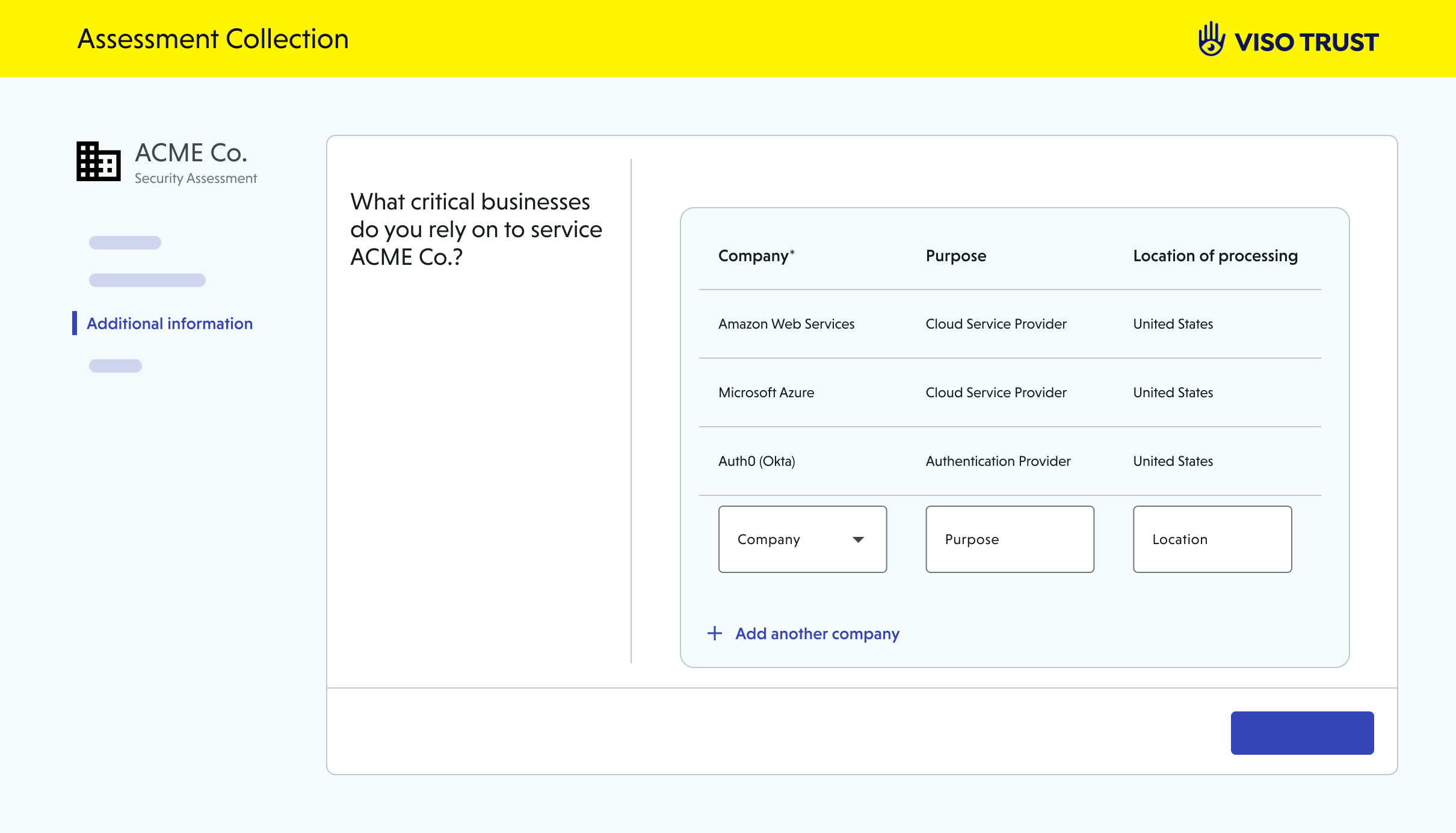
Introducing Sub-Processor Intelligence: See the Risk Behind the Risk

You know your vendors. But do you know who they rely on?
Third-party risk management (TPRM) has always focused on direct vendors. But the real exposure often lives one layer deeper, in the sub-processors handling your data behind the scenes. These are fourth parties, fifth parties… nth parties. And right now, most organizations can’t see them.
That’s exactly why we built Sub-Processor Intelligence, a new capability in VISO TRUST designed to help you uncover hidden privacy risks and stay ahead of regulatory demands.
Why We Built Sub-Processor Intelligence
We kept hearing the same concerns from privacy and security teams:
- “We only find out about sub-processors after something goes wrong.”
- “We’re accountable for compliance, but we have no visibility beyond the vendors we contract with.”
- “We have no way to verify what a vendor is doing with our data, let alone their sub-contractors.”
And the data supports it:
- Only one-third of companies have a clear inventory of their vendors’ sub-processors (Deloitte, 2023)
- The Okta breach and Morgan Stanley fine both stemmed from fourth-party failures
- GDPR Article 28 and CCPA/CPRA explicitly require sub-processor oversight
So the risk isn’t theoretical. It’s operational, financial, and reputational.
What Is Sub-Processor Intelligence?
Sub-Processor Intelligence gives privacy and security teams insight into who vendors rely on to process personal data – and what that means for your organization.
It collects sub-processor data from vendor disclosures, artifact intelligence (like SOC 2s or DPAs), and maps that into a usable, visual interface.
What you’ll see:
- Sub-processors listed directly by vendors in the collection flow
- Sub-processors automatically detected in policies, audits, and contracts
- Where those sub-processors sit in your relationship graph
- How their presence impacts your privacy and compliance posture
This is all accessible in-platform, under the Privacy risk dimension in Relationship Details, so your team can evaluate and act without jumping between tools.
Why This Matters Now
The sub-processor blind spot is growing fast:
- Organizations now use 10 times more SaaS apps than just a few years ago (McKinsey, 2023)
- APIs and AI services are plugging in everywhere, and they often bring their own invisible data handlers
- Privacy laws like GDPR and CPRA expect you to know exactly who has access to personal data, even down the chain
Yet most teams still lack visibility beyond Tier-1 vendors. Over half of security leaders say they don’t monitor sub-processors (Forrester, 2022).
Regulators are responding. The SEC fined Morgan Stanley $35M when a vendor’s sub-processor mishandled customer data. GDPR Article 28(2) is clear: vendors can’t hire sub-processors without your explicit authorization.
Meanwhile, forward-looking organizations are embracing PrivacyOps, automated data lineage, and third-party risk platforms that offer continuous intelligence, not just annual audits.
Here’s What You Can Do with Sub-Processor Intelligence
- Spot unseen risk: Know which sub-processors are touching your data
- Visualize extended relationships: See nth-party links in the graph
- Prove compliance: Show auditors you’ve reviewed and approved downstream vendors
- Automate evidence: Extract sub-processor data from artifacts like SOC 2s and DPAs
Who It’s For
- Privacy leads tracking GDPR/CCPA compliance and data-sharing obligations
- TPRM teams dealing with complex vendor ecosystems
- Security architects seeking deeper supply chain visibility
- Compliance officers preparing for audits and data protection impact assessments
Want to See It in Action?
Book a demo to see how VISO TRUST reveals hidden privacy risks.